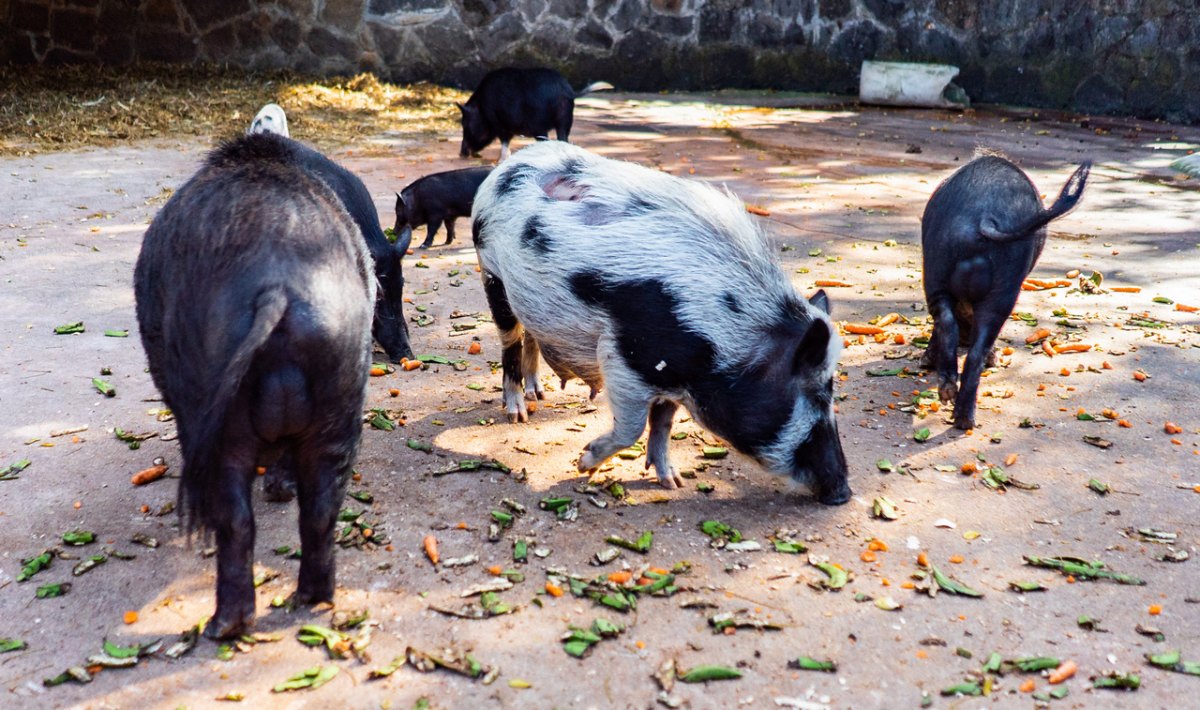
Wild boar in Mauritius

The wild boar: how and where does it live? All about the wild boar The wild boar is an animal capable of developing amazing methods to adapt in many environments. This strategist lives in many parts of the world. In Mauritius, it is increasingly present, although it is the prey of hunters. Let's get to know the wild boar, the goose and the wild boar. The wild boar, Sus scrofa, belongs to the Suidae family and to the Artiodactyla order. It is a mammal whose male weighs more than 110 kg (knowing that its weight can exceed 150 to 200 kg if it benefits from an abundant food) for the animals living on our national territory, but one counted wild boars of three quintals in Eastern Europe. Its length is generally around 1.70 m. When it is adult - it becomes mature at the age of 2 years -, the male has very prominent canines and its suites (i.e. its testicles) form a significant growth just at the birth of its tail. He can also be distinguished from the female by the presence of a tuft of hair on the sheath that surrounds his penis, called the penis brush. The adult female of the wild boar, called the goat, reaches maturity at the age of 1 year. She rarely weighs more than 80 kg and measures less than 1.50 m in length. It can also be identified by its suckling or teats with ten teats, which are at their peak in the summer. However apart from these attributes particular to each sex and identifiable all year round, certain features particular to each are only apparent in summer because their hair is then short. We can nevertheless note that the sexual dimorphism in the boar is relatively marked. The young of the boar is the marcassin. It also has physical characteristics specific to its young age as its livery striped horizontally with light stripes alternating with dark lines. It allows this big game to be camouflaged in the heart of the undergrowth. The hairs that form the top layer are called bristles. As soon as the youngster reaches the age of 4 months, the bristles turn red and 5 or 6 months later become very dark. Depending on its age, and according to the color of its bristles, the boar is sometimes nicknamed red beast or black beast. With the exception of its sight which is not extraordinarily developed, the other senses of the boar allow it to recognize sounds and smells from afar, and to distinguish many foods by their gustatory differences. It can therefore rely as well on its sense of smell as on its hearing and taste. The boar has the particularity of not sweating. As for its cry, different terms are attributed to it. Thus, the marcassin squeaks, and in adulthood the boar growls, nasal or grunts. Its longevity is extremely variable since it is estimated between 11 and 26 years: an estimation not always perfectly representative of the species, the wild boar being a forest mammal classified among the big game, is widely prized by hunters in the world. It also has predators, despite its imposing mass, which are none other than the bear, jackal, wolf, lynx, panther and fox, depending on the geographical area in which it lives. Forest omnivore, the wild boar lives in undergrowth and mixed or deciduous forests. If it needs to take shelter, it settles in a sunny thicket or a hollow which is called a bauge. It does not hesitate to leave its habitat to explore and feed in the surrounding meadows and cultivated fields (to the great displeasure of farmers), areas where thorny plants grow, which it does not fear, marshes, mountain slopes or scrubland. Almost everything suits him as long as the vegetation is sufficiently abundant. This allows him to feed as well as to hide. The boar eats food of animal or vegetable origin. It has a strong propensity to be able to adapt to important food variations, adapting to what it finds in nature according to the seasons. Seeds, rhizomes, fruits, leaves, stems, acorns and achenes, mollusks, larvae, insects, earthworms, but also sometimes small animals constitute its diet, knowing that food of animal origin represents at most 5 to 7% of its overall diet. We can therefore say that the wild boar adopts a largely plant-based diet. You'll find these animals easily at La Vanille Nature Park.
We have 194 guests and one member online